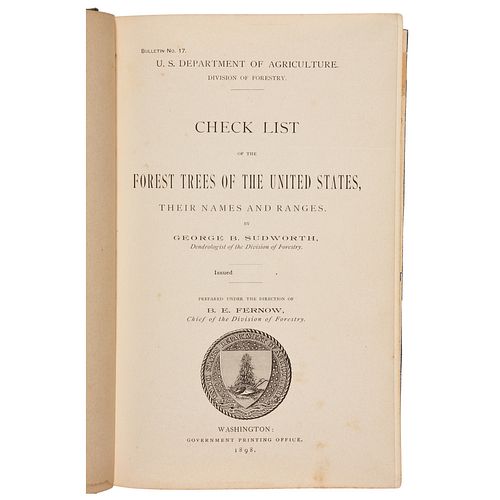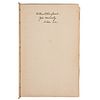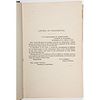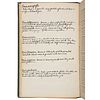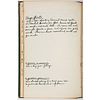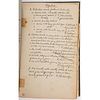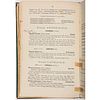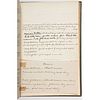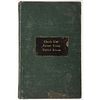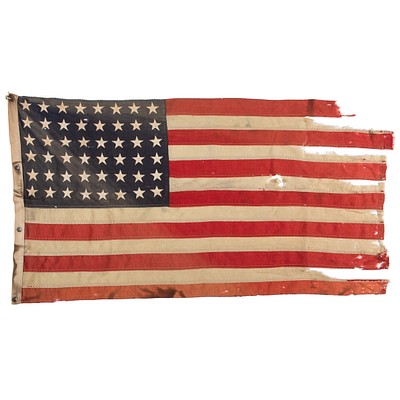Arthur C. Ringland, Forestry Textbook Inscribed with Extensive Notes While a Forestry Student at Yale University
About Seller
6270 Este Ave.
Cincinnati , OH 45232
United States
With offices in Cincinnati, Cleveland and Denver, Cowan’s holds over 40 auctions each year, with annual sales exceeding $16M. We reach buyers around the globe, and take pride in our reputation for integrity, customer service and great results. A full-service house, Cowan’s Auctions specializes in Am...Read more
Two ways to bid:
- Leave a max absentee bid and the platform will bid on your behalf up to your maximum bid during the live auction.
- Bid live during the auction and your bids will be submitted real-time to the auctioneer.
Bid Increments
| Price | Bid Increment |
|---|---|
| $0 | $25 |
| $500 | $50 |
| $1,000 | $100 |
| $2,000 | $250 |
| $5,000 | $500 |
| $10,000 | $1,000 |
| $20,000 | $2,500 |
| $50,000 | $5,000 |
| $100,000 | $10,000 |
About Auction
Jun 26, 2020
Cowan's Auctions is delighted to present the June 26 American Historical Ephemera and Photography Auction, including 55 lots devoted to the African American experience, over 175 lots dating from the Civil War Era, and more than 60 lots documenting life in the American West. Cowan's Auctions dawnie@cowans.com
- Lot Description
Arthur C. Ringland, Forestry Textbook Inscribed with Extensive Notes While a Forestry Student at Yale University
SUDWORTH, George (1864-1927). Check List of the Forest Trees of the United States, Their Names and Ranges. Washington, DC: Government Printing Office, 1898.
8vo (6 x 9.25 in.) Two hand-colored and inscribed maps previously tipped in (now loose), representing "Sudworth's Forest Regions" and "Sargent's Forest Regions." (Mild even toning, some wear to page edges). Green cloth with black morocco title label to front board with gilt rules and title; Tuttle, Morehouse & Taylor Co. New Haven, CT label to interior rear board. (Light to moderate scuffing to boards and extremities).
SIGNED and INSCRIBED "Arthur C Ringland. / Yale University. / October 1903." Nearly every other page is filled with Ringland's handwritten notes expanding upon information provided in text, including descriptions of trees.
Environmental conservation and the relief of human suffering clearly stand out as the defining purposes in the life of Arthur Cuming Ringland (1882-1981) and his storied government career. Ringland received his bachelor's degree and his master's degree in Forestry from the Sheffield School of Science at Yale University, and it is likely while he was a student there that he wrote the inscriptions present in the book featured in this lot. While still a student, he joined the US Forest Service at the turn of the century and served as Forest assistant for the Lincoln National Forest. Subsequently, he served eight years, from 1908-1916, as District Forester of the Southwestern Region, in which capacity he led a survey crew tasked with setting the perimeters of the region's National Forests and witnessed the signing of the New Mexico statehood proclamation in 1912.
After his final year as District Forester, Ringland turned his efforts to the ongoing war, joining the US Army in 1917 and working to help those affected by war for many years thereafter, including as chief of mission for the American Relief Administration in Europe, directing postwar relief efforts to Czechoslovakian children, and as a consultant to the National Defense Advisory Commission. He continued his European focus into the 1930s, as he was called upon to study forestry and trade relations in Italy, France, Germany, and elsewhere at the beginning of the decade, and his findings on work relief and conservation helped the US combat the effects of the Great Depression. Beginning in the latter part of the decade, Ringland returned to the Forest Service and went on to hold important roles in the Soil Conservation Service, the Agriculture Department, and even eventually the State Department.
As World War II was underway, Ringland saw the importance of using his experience to, once more, help alleviate the human suffering so often caused by international conflicts. He became executive director of the President's War Relief Control Board and came up with the idea that eventually blossomed into the international humanitarian agency, CARE (the Cooperative for American Remittances to Europe, later changed to the Cooperative for Assistance and Relief Everywhere). The founders of the resulting organization later declared Ringland the "father" of CARE in a tribute on the 12th anniversary of the program's first food package sent to Europe.
Even after his retirement from government in 1952, Ringland continued helping conservation efforts and people in need by participating in groups such as the Food for Peace Program, the American Freedom from Hunger Foundation and the Citizens' Committee on Natural Resources. - Shipping Info
-
Buyers are required to pay for all packing, shipping and insurance charges. Overseas duty charges are the responsibility of the successful Bidder. Be aware that for larger and/or valuable items, shipping charges can be substantial. - If there is no shipping amount on listed your invoice, you will need to make arrangements to pick up or ship your purchase through an alternative shipping company. Our shipping department can be contacted at 513.871.1670 (ext. 219) or email shipping@cowans.com. - Shipping charges include insurance for your order while in transit. If you have private insurance we will adjust your charge to include only packing and shipping. - Please allow 14 – 21 days after payment to package and ship your purchase as carefully as possible.
-
- Buyer's Premium



 EUR
EUR CAD
CAD AUD
AUD GBP
GBP MXN
MXN HKD
HKD CNY
CNY MYR
MYR SEK
SEK SGD
SGD CHF
CHF THB
THB